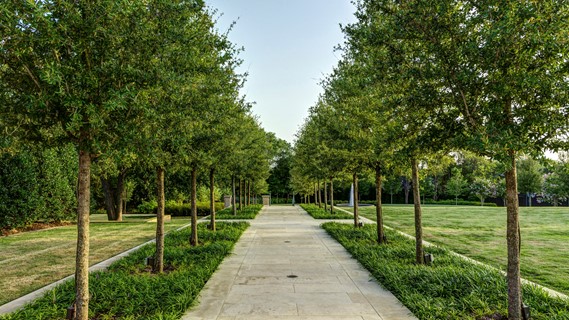Hilton Head Landscapes for Dummies
Hilton Head Landscapes for Dummies
Blog Article
All About Hilton Head Landscapes
Table of Contents9 Easy Facts About Hilton Head Landscapes DescribedThe Single Strategy To Use For Hilton Head LandscapesGetting The Hilton Head Landscapes To WorkThe Facts About Hilton Head Landscapes RevealedGetting The Hilton Head Landscapes To WorkThe Best Strategy To Use For Hilton Head LandscapesExamine This Report on Hilton Head Landscapes
Line creates all forms and patterns and can be made use of in a range of methods the landscape. Line in the landscape is produced by the side in between 2 products, the synopsis or shape of a type, or a lengthy linear function. Lines are an effective device for the designer since they can be used to develop a limitless range of forms and types, and they control activity of the eye and the body.

Lines can have one or even more characteristics, such as those explained below, but they commonly serve various functions. Number 1. Lines in the landscape - bluffton landscaping. The buildings of lines determine how people react to the landscape, both mentally and physically. Straight lines are structural and powerful; they produce an official character, are typically connected with a balanced style, and lead the eye directly to a prime focus.
The Ultimate Guide To Hilton Head Landscapes
Bent lines create an informal, all-natural, loosened up personality that is linked much more with nature and unbalanced balance. Curved lines relocate the eye at a slower rate and add secret to the space by developing covert sights.
Vertical lines in the landscape include high, slim plant product, such as trees, or high frameworks, such as an arbor or a bird home on a post. Horizontal lines move the eye along the ground aircraft and can make a space really feel bigger. Reduced lines are extra controlled and develop a feeling of remainder or repose.
The Ultimate Guide To Hilton Head Landscapes
Lines are also produced by the vertical forms of constructed attributes and plant product. There are three key line kinds that produce form in the landscape: bedlines, hardscape lines, and plant lines.
Bedlines link plant material to your house and hardscape due to the fact that the eye complies with the line, moving the gaze via the landscape. Hardscape lines are developed by the side of the hardscape, which delineates the constructed structure. Line can likewise be developed by lengthy and narrow products, such as a fence or wall surface.
What Does Hilton Head Landscapes Do?
Kind is found in both hardscape and plants, and it is commonly the dominant visual component that spatially organizes the landscape and often figures out the design of the garden. The type of structures, plant beds, and yard accessories likewise establishes the overall type motif of the yard. Formal, geometric kinds consist of circles, squares, and polygons.
Plants create kind in the garden through their lays out or silhouettes, yet kind can additionally be defined by a void or adverse space between plants - landscapers in bluffton sc (https://packersmovers.activeboard.com/t67151553/how-to-connect-canon-mg3620-printer-to-computer/?ts=1719958014&direction=prev&page=last#lastPostAnchor). Circles can be full circles, or they can be divided into fifty percent circles or circle sectors and integrated with lines to produce arcs and tangents
Unknown Facts About Hilton Head Landscapes
Circles are a solid design type since the eye is always drawn to the facility, which can be used to stress a focal factor or connect various other forms. Round kinds in hardscape and lawn panels.
The square form can additionally be segmented and pre-owned repetitively to develop a grid pattern. Unlike circles, squares are more powerful on the brink, which can be lined up or overlapped to develop one-of-a-kind patterns and more complicated types. Polygons are many-sided kinds with straight edges. Triangles, for instance, are three-sided polygons.
Meandering lines commonly mimic the natural course of rivers or streams and can be called smooth lines with deeply curved wavinesses. Twisting lines (Figure 3) work well for paths, plant bedlines, and dry stream beds. Meandering lines can include passion and enigma to a yard by leading viewers around corners to discover brand-new views and rooms.
6 Easy Facts About Hilton Head Landscapes Described

Common plant kinds are well developed and standard, as type is the most consistent and recognizable quality of plants. Visit Website Type can additionally be created via the massing of plants, where the total mass produces a various type than an individual plant.
A highly contrasting kind should be used with careone or 2 job well as a centerpiece, yet as well several develop disorder. Natural plant kinds, as opposed to over-trimmed types, need to establish the bulk of the composition. The relevance of overall kind is basically dependent on the checking out perspectivethe form of a tree can show up fairly various to an individual standing under the cover versus seeing the tree from a distance in an open area.
Some Ideas on Hilton Head Landscapes You Need To Know
Plant types also develop and specify the gap or open spaces between the plants, producing either convex or scooped kinds in the voids. High-arching tree branches commonly create a concave open room under the branches, and a round cover with low branches fills the room to develop a convex kind in the open area under the tree.

Report this page